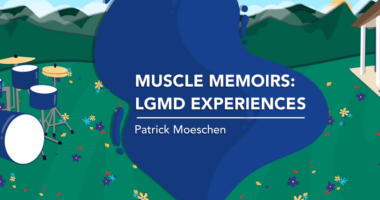The importance of advance directives, especially with MD
A columnist shares a simple guide for getting started with after-life planning

Amid the hustle and bustle of daily life, many people tend to put off what I like to call “after-life” planning. It sounds a bit less scary than “end-of-life.”
When I was diagnosed with muscular dystrophy at the age of 12, long-term planning never crossed my mind. (Do any kids think more than five minutes ahead?) The first time I was exposed to end-of-life planning was when I lost my grandfather at 15. I remember my mother and her brothers discussing “Dad’s plans and wishes.” I had no idea what they were talking about.
Fast forward six years, and my father was diagnosed with stage 4 lung cancer. He had a tumor near his heart, making surgery impossible. He tried radiation, but the tumor didn’t shrink; instead, the cancer spread rapidly to his bones and brain. He died four months after his diagnosis, five days before Christmas in 1993. I had just turned 21 and was in my junior year of college.
Devastated, my sister and I helped my mother put things in order. Other than a will, which left everything to my mom, my father had no written wishes. Years earlier, in passing, he’d mentioned to me that he wanted to be cremated, but that was all. Without much to go on, our family struggled to understand what he would have wanted. Losing a parent made me grow up quickly. I realized that I didn’t want my loved ones to feel lost after my passing.
Having muscular dystrophy amplified my thoughts, and as I began to undergo more frequent heart testing in my 20s and 30s, I looked into after-life planning. I realized it wouldn’t be as hard as I thought to put my affairs in order, and I could rest easy knowing I wouldn’t leave my loved ones in chaos. We should all take these steps while we feel healthy and have a clear mind. Chronic illness or not, the end comes for all of us.
As I’ve gotten older, I have amended my plans to factor in my marriage, my children, and my disease progression. I review them once a year and make adjustments as needed. When I began, I didn’t even speak with a lawyer, as there are plenty of free online resources that can help. I believe the most important part of the process is communicating with your loved ones openly and honestly about your wishes in the event you’re unable to make medical or financial decisions for yourself.
To get you started, below is a guide to after-life planning:
What you’ll need
Advance directives may include:
- A living will, which specifies your wishes regarding medical treatment in the event that you’re incapacitated
- A healthcare power of attorney (POA), which grants someone the power to make decisions about your medical care.
How to set it up
1. Choose your healthcare POA. Be sure to pick someone you trust (such as a spouse, family member, or friend). Talk with them first to ensure they’re willing to be your POA and understand your wishes and values.
2. Decide on your wishes regarding medical care and treatment. Understand what “do not resuscitate” (DNR) means. Do you want a DNR order? Think about the possibility of a prolonged hospitalization. Would you want to be kept alive on machines? How do you feel about organ donation? Use simple language to communicate your wishes clearly.
3. Fill out the proper legal forms. You can find free, downloadable ones through a quick Google search. Be sure to use forms that apply to your state.
4. Notarize and finalize the documents. Many banks and credit unions offer this service. While not all states require a witness, having one or two is generally recommended.
5. Make copies of the forms. You may want to share your advance directives with your doctor, family members, or friends. You could also upload them to a secure location and give select people electronic access.
I hope that this column lessens some of the fear of after-life planning. It doesn’t need to be a difficult process or conversation. If we continue to normalize the topic, it becomes one more thing that we can control in life with a chronic illness.
Note: Muscular Dystrophy News Today is strictly a news and information website about the disease. It does not provide medical advice, diagnosis, or treatment. This content is not intended to be a substitute for professional medical advice, diagnosis, or treatment. Always seek the advice of your physician or another qualified health provider with any questions you may have regarding a medical condition. Never disregard professional medical advice or delay in seeking it because of something you have read on this website. The opinions expressed in this column are not those of Muscular Dystrophy News Today or its parent company, Bionews, and are intended to spark discussion about issues pertaining to muscular dystrophy.








Leave a comment
Fill in the required fields to post. Your email address will not be published.